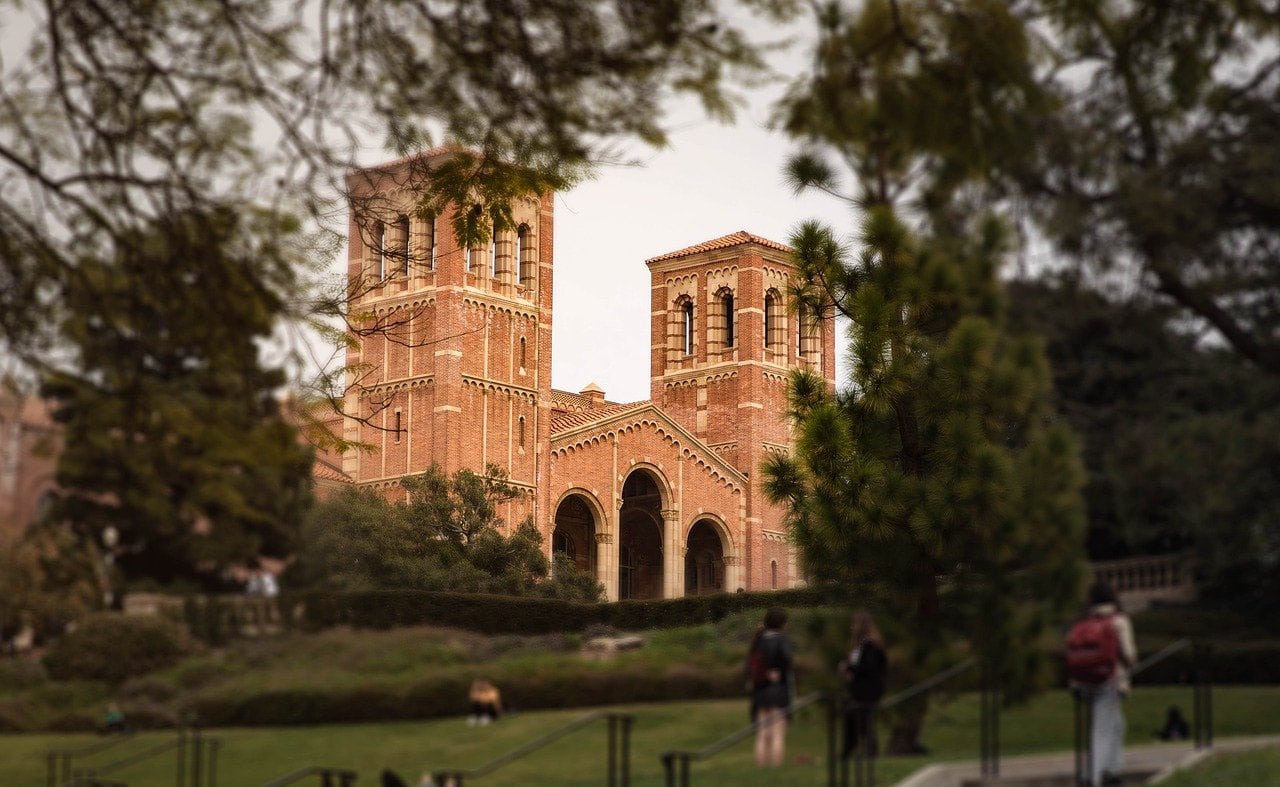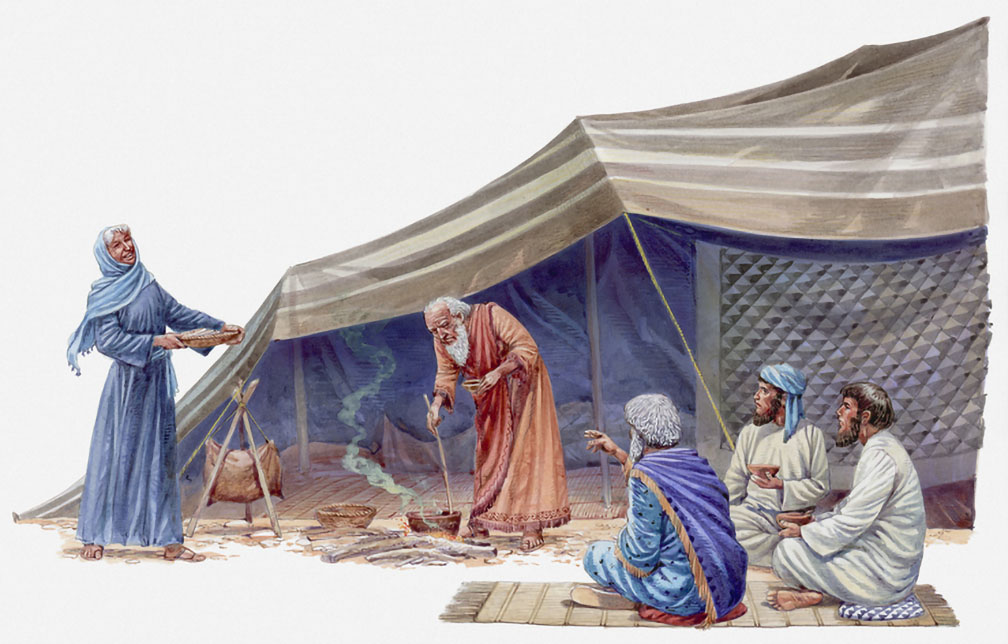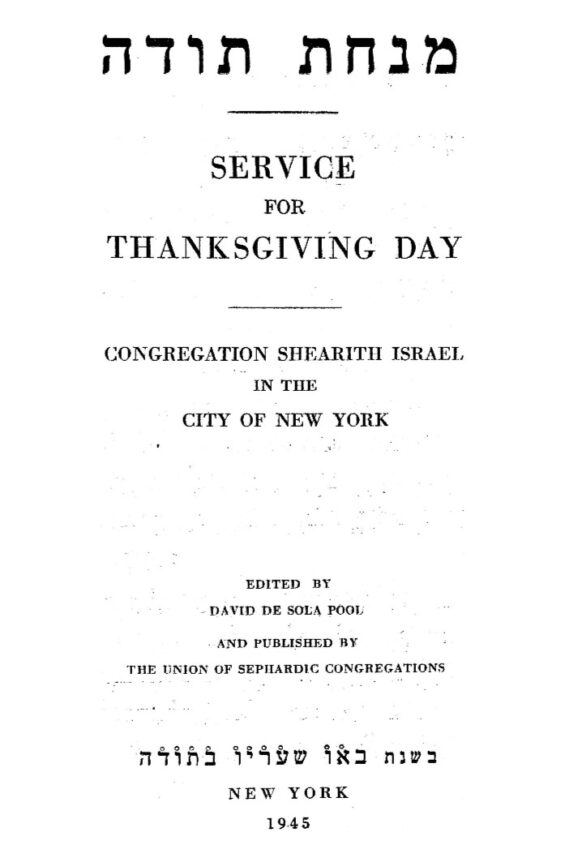When the cosmos was about to be created — the fundamental forces of nature being unified in an exceedingly hot, dense point and galaxies, stars, planets, even stable matter itself yet unformed — there was no recognizable space, no measurable time. There was no darkness over the surface of the deep because there was no deep, no surface, no over and no under. No wind hovered over any water, as there was not yet any hydrogen or oxygen, much less any combination of them in the form of water. And there was no wind, either. What there was — all that there was — was chaotic, pulsating Potential.
At some moment, for reasons yet unclear, what was began to change into what is. “>inflated, and then started to expand. Its temperature dropped from an unfathomably hot state of “>cooling was sufficient for sub-atomic particles to become protons and neutrons and other heavier particles. At the three minute mark, with the temperature now down to a cool “>380,000 and 400,000 years after creation, the temperature in the considerably expanded and expanding universe dropped to less than 3000 degrees Kelvin. Electrons now orbited the existing nuclei. Atoms formed. The universe was now transparent to visible light, but in the absence of stars “>form galaxies filled with stars. Over time, long periods of time, some stars died and in the process sent forth heavier elements created in their core. As that process repeated and repeated, the universe became “>One of the earliest galaxies to form was one now known as the “>the Sun. Heavier stellar dust surrounding the Sun accreted into various objects, some large enough to be called planets. The third planet in orbit around the Sun is known as Earth. Due largely to its distance from the Sun, the temperature of Earth relatively soon came to allow for liquid water and a protective atmosphere. This was very, very good.
Shortly after conditions permitted, “>we do not know exactly what forces changed inorganic chemical compounds into self-replicating lifeforms. All that we know is that the change was very, very good.
Life evolved over time, all kinds of life, slowly at first and then profoundly. Subsequent natural disasters caused “>impact of an asteroid or comet on Earth about 65 million years ago, non-avian dinosaurs died, but small mammals now had an opportunity to multiply in number and evolve in form. And they did, ultimately generating a species of primates who could stand erect and wonder and think and speak and proclaim that all that had come before was very, very, very good.
Jewish tradition literally begins with the Beginning. The Judahites and Israelites and their ancestors who first began to contemplate the Beginning and their beginnings had no inkling either about the reality of the origin of the cosmos, or of the nature and duration of its development. But then, how could they have known what actually happened? Science as we understand it did not exist when the authors of the Torah stories put quill to scroll.
And, equally important, the purpose of those authors was not to observe, describe and test natural phenomena. Rather they were interested in the preservation and development of a particular people in a particular place during a particular period of time. Their collected story was not so much about fact, as it concerned faith and future. They were focused, to use the phrase of the Yiddish writer “>“one God, one Law, one people, one land.”
Consequently, they chose to begin their national saga both by demythologizing the then current creation stories extant in the ancient Near East and asserting, though not consistently or in philosophical terms, the idea that there was and ought to be order in the universe, an order established by a single, powerful god. They wrote of a deity who not only operated in history, but who initiated history through a series of acts of creation, differentiation, separation and identification. (See Gen. 1:1-31.) With key elements of the universe both established and ordered, their tale of the development of humanity generally and the destiny of a particular family, nation and people could now unfold.
Still, while the creation story in Genesis is mythic (i.e., a traditional story that explains) and not scientific (i.e., not analytic and predictive), it is a powerful myth. It is one of the two interventions in history, along with the exodus story, that are invoked frequently as evidence of God’s powers and achievement. Biblical prophets like Isaiah (at, e.g., 40:12, 42:5) and psalmists (at, e.g., 8:2-4, 19:2, 102:26 and 121:1-2) maintained and embellished the theme of the creator God. That theme later became incorporated in the siddur, the Jewish prayer book, as part of prayers like the Sabbath Kiddush recited over a cup of wine, the evening prayer Maariv Aravim, the Sabbath morning Psukei D’zimrah (verses of praise) and the traditional closing prayers, Aleinu and Kaddish Yatom (the Mourner’s Kaddish).
Discoveries in science over the last few centuries, and especially in the last few generations, have challenged the literal Genesis text. “>For others, the story retains vitality and they have strained to reconcile the ancient words with contemporary knowledge. For still others, though, people who embrace modern science without reservation, the biblical myth serves as the basis for what some call “>evolution theology or “>Doomsday Clock now sitting at only three minutes to midnight), history evidences no less than five mass extinctions of life in the last “>last of these extinctions occurred about 65,000,000 years ago when, as noted above, an extraterrestrial object hit Earth. The force of the blow, on the Yucatan Peninsula in Mexico, was perhaps “>biggest impact crater on Earth.
Moreover, even assuming that we avoid disease, war and asteroids, human life on Earth, indeed Earth itself, is still doomed. Our Sun is about halfway through its own lifecycle. By most estimates, it has “>red giant star. As the solar death process unfolds, the Sun will expand first to reach Mercury’s orbit, then that of Venus and finally Earth’s. The atmosphere will dissipate, the seas will evaporate and “>established bases on more distant planets or their moons or even in other star systems in the Milky Way. Yet that may not be enough to save our species. Our spiral galaxy is on a collision course with our nearest and much larger galactic neighbor, “>the two star systems will collide. According to Harvard astronomy professor and theoretical cosmologist “>spheroidal shaped galaxy (3/12). Of course, by then, as we have seen, our birth planet and our Sun will be dying and taking Earth with it. Will the new worlds on which we have landed survive the twists and turns of intergalactic gravitational forces?
But wait! If an intergalactic collision is much too much to contemplate, there may be less, much less, in our longer term future. In recent years, science has come to understand what the late, great New York Yankee catcher “>may not have been the first to say so). “The future,” Yogi once said, “>Edwin Hubble’s discovery in 1929 that galaxies in general were moving apart from each other was astonishing enough. It indicated that our universe, space itself, was expanding. Less than twenty years ago, in 1998, astrophysicists determined that the rate of expansion is not steady as once supposed, but is in fact accelerating due to a “>trillions of years in the future, perhaps because dark energy is less pervasive than thought or ceases to be as powerful as thought, gravity overcomes the expansion of the universe, a process of universal collapse and consolidation ensues, all that is rushes back ultimately to a hot, dense state similar to that from which the universe emerged.
In the Big Rip, the expansion of space proceeds to the point where first galaxies, then stars and planets and ultimately the atoms of elements themselves cannot hold together. They simply rip apart, leaving a vast expanding universe of “>22 billion to 62 billion years from now.
In the Big Freeze, the universe continues to expand, but not sufficiently fast to cause cosmic suicide. As galaxies become more and more separated from each other, and stars within galaxies do as well, our descendants, if any, will lose the ability to see them and the evening sky will become darker and darker. As the universe gets larger, its temperature will approach absolute zero. Existing stars ultimately will die and no more will be born. The universe will suffer from heat death and become an infinitely large area of dark husks and waste.
Of course, much of this is speculative. And there are variations on these themes as well as other scenarios. For instance, some believe that the Big Crunch could lead to a Big Bounce and renewed life for the universe. Others talk about a “>Big Slurp, where a bubble in our universe or from another universe suddenly appears and annihilates our universe. That said, and with all possible caveats, the Big Freeze scenario appears, for now, to be the “>Second Temple was constructed, ultimately that period ended in destruction and dispersal as well. Not only had the prophesied time of peace and prosperity neither come nor been sustained, the rabbis in the “>Messianic Age, one which would be presided over by the anointed one, the Mashiach or “>6000 years after creation, a view “>3761 BCE, meaning that the Messianic Age would arrive no later than Rosh HaShanah in the year 2239 CE. The rabbis were giving themselves and the Messiah plenty of slack.
But as the great medieval scholar “>for the Rambam (at 19-20/38) was that Jews would return to the land of Israel and regain their independence. Life would go on. Even as some imagined horrific battles or other conditions that would presage the Messianic Age, there was no narrative about mass destruction during the Messianic Age itself. The whole point was the reconstitution of a united Jewish People in their ancestral homeland, free to build their society in peace.
How could it be otherwise? After all, if it were foreseen that the entirety of what is, including life itself, would someday cease to be, and cease irrespective of the scope of adherence to a particular set of commandments, laws and instructions, how would rabbis of that time have explained the purpose of the original creation? What would such an anticipated end say of the Creator of the Beginning? Or of God’s later promise to Noah, his descendants and all living creatures, symbolized by the rainbow, to never again destroy the world? (See Gen. 9:8-17.)
Of course, the same questions can be asked of rabbis today and they have less of an excuse of ignorance. At the same time, perhaps the Messianic Age is too important a topic to be left to theologians. Perhaps it is for poets to provide the compelling lesson, as “>here:
If you always assume that the man sitting next to you is the Messiah,
Waiting for some simple human kindness,
You will soon come to weigh your words and watch your hands.
And if he so chooses not to reveal himself in your time,
It will not matter.
Did you enjoy this article?
You'll love our roundtable.
Editor's Picks



What Ever Happened to the LA Times?

Who Are the Jews On Joe Biden’s Cabinet?


No Labels: The Group Fighting for the Political Center
Latest Articles
A Moment in Time: “Thanksgiving – Just How Long is a Moment in Time?”



Thanksgiving Wisdom from Community Leaders

Steven Hoffen: Hydroponics, Giving and Growing Peace










 More news and opinions than at a Shabbat dinner, right in your inbox.
More news and opinions than at a Shabbat dinner, right in your inbox.